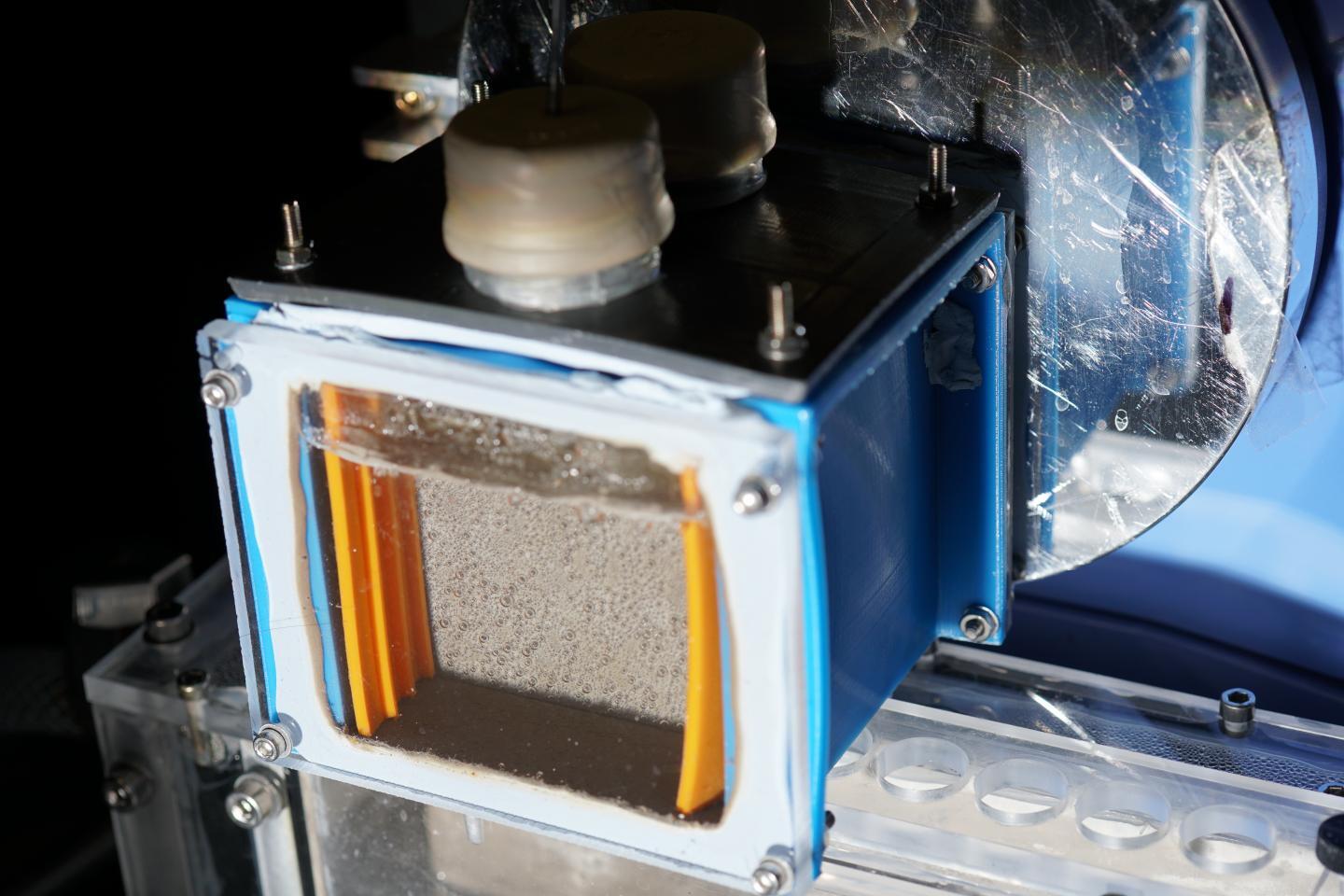The research was carried out by a group working under Professor Erwin Reisner in the university’s department of chemistry, which has made a number of promising advances in energy research over the past decade. In 2013 it demonstrated how hydrogen could be produced using cobalt as a cheap catalyst, and in 2017 showed how the gas could be made using biomass as the starting point.
Most recently, we looked at a type of artificial leaf developed by the group, which much like natural leaves, converts sunlight and water into fuel – in this case syngas made of carbon monoxide and hydrogen. This device captured sunlight through perovskite light absorbers, a component in some solar cells, but the team has now made some tweaks to its approach. Rather than the perovskite light absorbers, the new platform relies on novel photocatalysts embedded in a sheet made up of semiconductor powders, which can be produced easily and cheaply.
The 20 cm2 (3.1 in2) sheet developed as a test unit was used to convert sunlight, carbon dioxide and water into oxygen and formic acid (rather than syngas), which can be stored easily for direct use as fuel or later used as a building block for hydrogen.
According to the team, this method is an entirely new way of converting carbon dioxide into clean fuels, and one that could quite readily be scaled up. The scientists say it should be relatively straightforward to produce versions that span several meters, and imagine these types of devices forming large arrays as part of facilities that produce clean energy, much like solar farms.
“We were surprised how well it worked in terms of its selectivity – it produced almost no by-products,” says first author of the study Dr Qian Wang. “Sometimes things don’t work as well as you expected, but this was a rare case where it actually worked better.”
For its next steps, the team is working to improve the efficiency of the device by trying out different catalysts, which may also enable it to produce different types of solar fuels.
“We hope this technology will pave the way toward sustainable and practical solar fuel production,” says Reisner.
The research was published in the journal Nature Energy.
Source: University of Cambridge
–—












